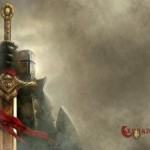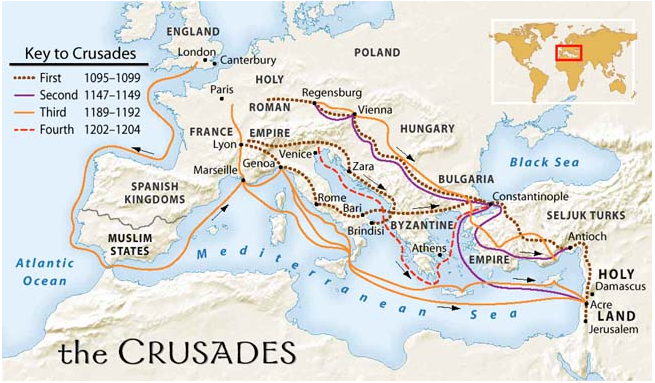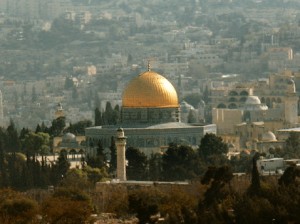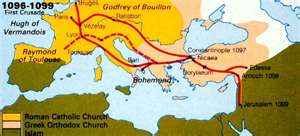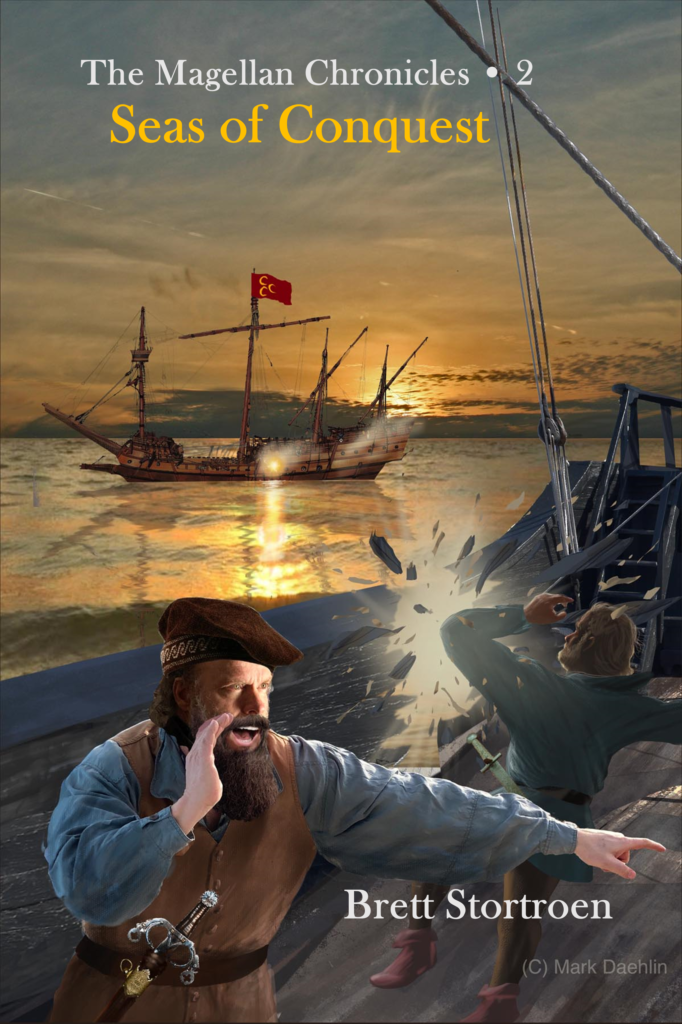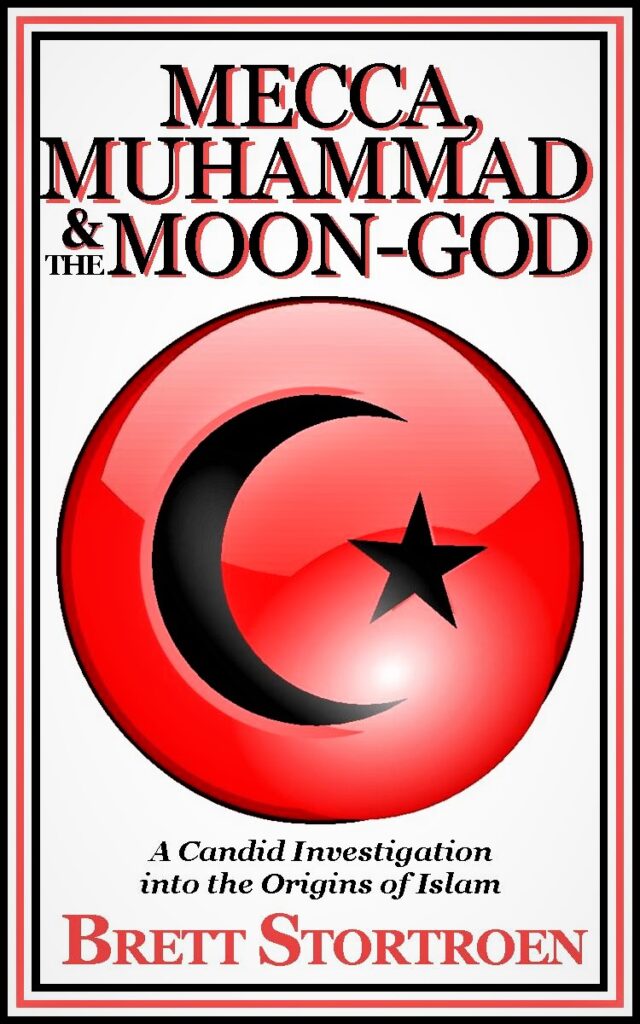When the word “Crusade” is injected into a conversation many divergent views and mental images often emerge. Unfortunately, many of the perceived modern myths surrounding the “Crusades” are exactly that, myths.
The actual term “Crusade” was not employed or applied by Pope Urban II when he called for the First Crusade. Asbridge gives a concise historical definition:
Contemporaries generally termed this ‘crusade’ (first crusade) simply an iter (journey) or peregrination (pilgrimage). It was not until the close of the twelfth century that more specific terminology developed, in the form of the word crucesignatus (one signed with the cross) for a ‘crusader,’ and the eventual adoption of the French term croisade, which roughly translates as ‘the way of the cross.’[1]
Numerous crusades have taken place throughout history. However, historians usually deem “the Crusades” as seven major military campaigns from Western Europe to liberate the Holy Land from Islamic rule. The First Crusade was called by Pope Urban II in 1095 and began in 1099. The Seventh Crusade concluded in 1250 and the last Crusader cities capitulated to the Muslims in 1291.[2]
The crusading movement involved every country and class of Europe, involving virtually every aspect of life; the Church, politics, literature, economy and society in general.[3]
Islamic View of Crusades
Muslims had shown little interest in the Crusades before the end of the nineteenth century. Most Islamic historians regarded them with indifference and apathy. Several of these scholars even preferred the Franks to drive out the despised Turks and prevent them from further advance into Egypt. However, as the once mighty Islamic Ottoman Empire, known by the epithet “the sick man of Europe,” declined in power and influence, resentment began to build in the Muslim community against the West. Further anger ensued as the nation State of Israel was mandated. Thus, for the most part, Islamic bias against the Crusades was a twentieth century invention.[4]
(Impetus for the Crusades – “The Abomination of Desolation”)
A modern popular line of thought regards the Crusades as a tool used by popes and kings to advance their powers into new lands and convert the Muslims. Since the attacks on September 11, 2001 many citizens and world leaders have apologized to Islam for the Crusades. Can this reasoning be justified from history or even logical? Or should Muslims, rather, apologize for Islamic massacres of former Christian lands in their quest for world domination? The combination of Islamic military invasions of Europe and also the desecrations and rule over the Holy Land were the two primary reasons for the call for a planned military response.
The Islamic incursions into the Holy Land began in 639 when the Caliph Umar declared to Sophronius, the Bishop of the Jerusalem Church, he was going to build a memorial mosque (The Dome of the Rock) to the prophet Muhammad over the ancient Jewish Temple site. Sophronius burst out in shock, “Verily, this is the Abomination of Desolation as spoken of by Daniel the prophet, and it now stands in the holy place.” Umar placed the eighty year old Christian Bishop Sophronius in forced labor imprisonment and [Sophronius] died shortly thereafter.[5] Muslims both conquered and desecrated the holy city of Jerusalem.
Sophronius was referring to several Judaic-Christian scripture verses when declaring the mosque was the “The Abomination of Desolation.” First, Daniel 12:11-12 states:
And from the time that the daily sacrifice shall be taken away, and the abomination that maketh desolate set up, there shall be a thousand two hundred and ninety days. Blessed is he that waiteth, and cometh to the thousand three hundred and five and thirty [1335] days.
Second, Mark 13:14 states:
But when you see the abomination of desolation, spoken of by Daniel the prophet, standing where it ought not, (let him that readeth understand,) then let them that be in Judea flee to the mountains.
Third, Luke 21:20 states:
And when you see Jerusalem compassed with armies, then know that the desolation therof is nigh.
The “Desolation and Abomination” event described must occur after the time of Christ. Several scholars have proposed the theory that the “Dome of the Rock” was the “Abomination of Desolation” as believed by Bishop Sophronius. This interpretation considers the historical timeline of Jerusalem and the factor of desolation.
The first wave of desecration and desolation took place under the siege of Jerusalem by Titus in the year 70. It has been estimated that 1.5 million Jews were massacred in the vicinity of Jerusalem and nearby regions. A second wave occurred in 132-135 where another 600,000-750,000 Jews were slaughtered during the Bar Kokhba revolt. In spite of these massacres the Jews and Christians continued to reside and flow back into Jerusalem. However, in 639, a final destructive third wave force conquered Jerusalem under the Islamic armies led by Caliph Umar.[6]
After the Islamic invasion and occupation of Jerusalem in 639 the city became officially desolate and the abomination mosque set up over the holy temple site. Notice in the original language that the abomination is an “it” and “set up” and “standing where it ought not.” All these descriptions combined with further linguistic studies implied a building or foundation placed where it does not belong. Furthermore, the Dome of the Rock mosque has included an inscribed blasphemy taken from Qur’an 19:35: “It is not befitting to (the majesty of) Allah that He should beget a son.”
Jerusalem was besieged by armies on several occasions; 70, 132, 639, 1099, 1187, 1948, and 1967. Between 639 and 1948 Jerusalem was mainly under Islamic rule except some brief periods during the recapture by the Crusaders. By calculating the days of Daniel as years one can mathematically find an interesting correlation in these key dates. There were 1260 years (called days in Daniel) from the actual founding of the Dome of the Rock in 688 (dates range from 688-691) and the official establishment of the State of Israel in 1948. This brings the fulfillment period to within thirty years of Daniel’s prophecy of 1290 days/years. It would seem that the occupation (and possible dedication of the sacred site to Allah prior to the erection of the Dome) could account for the other thirty years. There are other biblical prophetic numbers and dates which, when calculated, seem to fit the significant dates of 688, 1948 and 1967.
Between 688 and 1948 Jerusalem was a desolate wasteland. Mark Twain reflected his impressions of the Holy City during his visit there in 1867:
“. . . [a] desolate country whose soil is rich enough, but is given over wholly to weeds-a silent mournful expanse. . . . A desolation is here that not even imagination can grace with the pomp of life and action. . . . We never saw a human being on the whole route. . . . There was hardly a tree or a shrub anywhere. Even the olive and the cactus, those fast friends of the worthless soil, almost deserted the country.”[7]
Islam seems to astonishingly fit the beast system in historical prophecy and historical events. This analysis remains one hypothesis that deserves some credence and consideration in the literary science of biblical eschatology.
Later in the early eleventh century, Hakim, the Mahdi-like figure, further desecrated both the Jewish and Christian sites and committed heinous acts against the citizens of Jerusalem. These abuses by the hand of Islamic factions continued throughout the eleventh century against Christian pilgrims in the Holy Lands. Christian pilgrims brought firsthand testimony of these atrocities to the nobles in Europe. During the eleventh century, a wave of church reforms and piety spread across Europe touching all classes, including warrior knights. Asbridge acknowledges the importance of defending and reclaiming the Holy Land as the motivation for the Crusades:
From the end of the eleventh century onwards, the crusades pitted western Franks against the Muslims of the eastern Mediterranean. This was not because these holy wars were launched, first and foremost, to eradicate Islam, or even to convert Muslims to the Christian faith. Rather, it was a consequence of Islam’s dominion over the Holy Land and the sacred city of Jerusalem.[8]
Many query: Did Muhammad and his followers have any legitimate right to seize all of Palestine and Jerusalem? The answer should be obvious. Muhammad lived in the Arabian territories and his only claim to Jerusalem was from one of his visions where he purportedly ascended from Jerusalem to Paradise. However, with no witnesses one must rely on Muhammad’s claim to his own fanciful dream. Furthermore, Muhammad claimed to be the last in the line of prophets of Israel. Could this be true? Definitely not; Muhammad’s Qur’an is full of mistakes and distorted legends that never existed in the original Hebrew Scriptures.
In addition, Muslims claim Muhammad was the greatest of the prophets. If this were true, how come he never performed any genuine supernatural miracles or healings such as the previous Hebrew prophets? The answer appears obvious; he was an imposter and simply perpetuated heretical doctrines which had circulated in the Arabian Deserts. Muslims have no legitimate claims to Jerusalem or the Holy Land based on religious reasons. Only the Jews and Christians had real prophets living and ministering in these lands.
(Impetus for the Crusades – Aid to Besieged Byzantium)
In addition to the desire to liberate the Holy Land, there was legitimate reason for a defensive war against further Islamic encroachment against Europe. The Christian empire of Byzantium had been under attack for decades in all provinces, had lost Jerusalem, and now was under dire need for aid. Islamic Turks were within one hundred miles of Constantinople. The Byzantine emperor, Alexius Comnenus dispatched a letter of urgent appeal to the Count of Flanders requesting aid to repel the invaders. The Pope aired this letter first at a council in Piacenza in March 1095. Tradition states that on his return to French lands, Pope Urban II met with Raymond St. Gilles, Count of Toulouse for a possible role as military leader in the liberation campaign.
Pope Urban II subsequently called for a council at Clermont, Francet o read the letter from emperor Alexius. He began to recount the graphic details in the letter of murder, torture, and rape of Christian pilgrims and the desecration of the holy sites commited by the Muslim Turks. Soon after, on November 27, 1095, Pope Urban II had an elevated platform erected in a meadow outside the city of Clermont and used his powerful voice to address a multitude of citizens; including peasants, nobility, and clergy. His speech would forever change history. Stark provides an account of Urban’s speech and rallying call to arms:
“They destroy the altars, after having defiled them with their uncleanness. They circumcise the Christians, and the blood of the circumcision they either pour on the altars or pour into the vases of the baptismal font. When they wish to torture people by a base death, they perforate their navels, and dragging forth the extremity of the intestines, bind it to a stake; then with flogging they lead the victim around until the viscera having gushed forth the victim falls prostrate on the ground . . . What shall I say about the abominable rape of women? To speak of it is worse than to be silent. On whom therefore is the labor of avenging these wrongs and recovering this territory incumbent, if not upon you? . . . If you are conquered, you will have the glory of dying in the very same place as Jesus Christ, and God will never forget that he found you in the holy battalions . . . Soldiers of Hell, become soldiers of the living God![9]
Shouts began to erupt of “God wills it!” “God wills it!” Men began to cut up their garments and cloaks to make crosses and sew them onto their chests. All agreed to embark on Crusade the next year.
It is noteworthy that nowhere in the Pope’s speech did he incite any call for conversions of Muslims or colonial ambitions. He simply called for the liberation of the former Christian Holy Land. Raymond of St. Gilles reiterated the mission by claiming he was going on “‘pilgrimage to wage war on foreign peoples and defeat barbaric nations, lest the Holy City of Jerusalem be held captive and the Holy Sepulchre of the Lord Jesus be contaminated any longer.’”[10]
The Myth of a ‘Treasure Quest’
Another myth claims the Crusaders were disinherited younger sons, driven by an insatiable appetite for riches and wealth that lay in store for those who would seize it. It is quite amazing how such stories become embedded within culture with no historical grounding.
In reality, most of the Crusaders consisted mainly of a few closely related families. To go on Crusade required an individual to sacrifice vast resources of financial capital. Each had to provide for their families at home and equip their mission for the long journey to the East. It is estimated that a Crusader had to raise four or five times his annual salary to make the trip. Many financed their journey by selling personal property and other assets. One of the First Crusade leaders, Godfrey of Bouillon, sold the county of Verdun to King Philip of France and also mortgaged his county of Bouillon to the bishop of Liege.[11] Another First Crusade leader, Robert of Normandy, was forced to mortgage his duchy to his brother.[12]
A great percentage of knights died in the east and foreclosures were rampant. The Crusader families often paid a high price financially to take part in these missions. If indeed there were easy riches to be had, why did only ten to fifteen percent of knights heed the call of the Pope and participate in Crusading? The answer is obvious; they instead, had to sacrifice almost all their finances and risk their very lives to take part in the quest.
[1] Asbridge, Crusades, 40.
[2] Spencer, Islam and Crusades, 147.
[3] Jonathan Riley-Smith, The Oxford History of the Crusades (New York: Oxford University Press Inc., 2002) 5,9.
[4] Stark, Battalions, 246-47.
[5] Ellis Skofield, Islam and the End Times: The Religious Battle Behind the Headlines (Fort Myers, Florida: Fish House Publishing, 2007), 40.
[6] [http://www.beholdthebeast.com/abomination_of_desolation.htm] (accessed January, 2012).
[7] Ibid.
[8] Asbridge, Crusades, 17.
[9] Stark, Battalions, 3-4. [10] Ibid., 109. [11] Ibid., 112-13.
[12] Asbridge, Crusades, 47. [13] Ibid., 42.

The Crusades – Definition Versus Myth by Brett Stortroen is licensed under a Creative Commons Attribution 3.0 Unported License.

